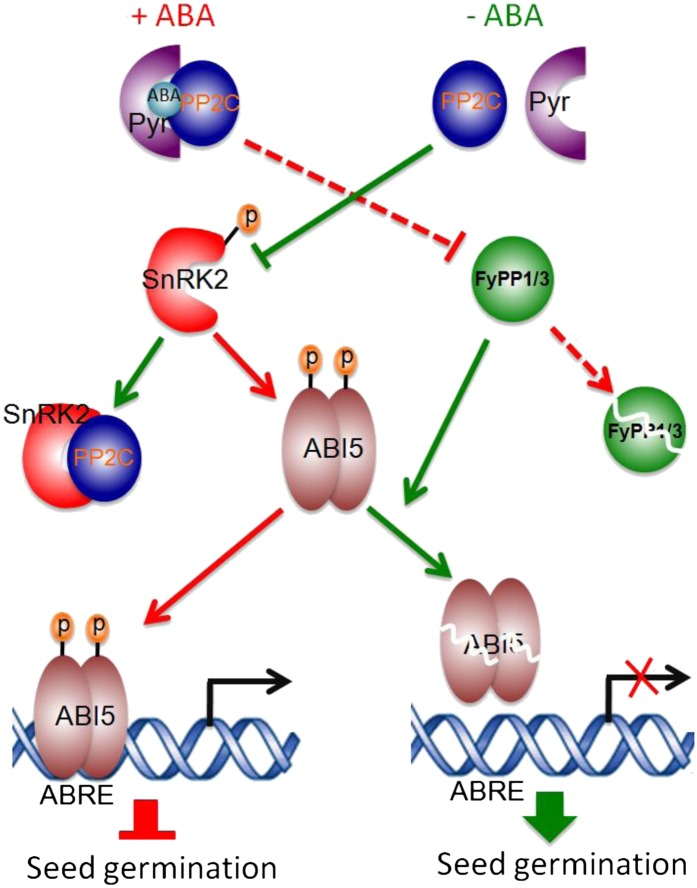Figure 8.
A Model Showing the Antagonistic Interaction between SnRK2 Kinases and FyPP/PP6 Phosphatases in ABA Signaling.
In the presence of ABA (+ABA), ABA mediates the formation of an ABA receptor-ABA-PP2C phosphatase complex (such as Pyr-ABA-PP2C complex). This causes the autophosphorylation and activation of the downstream SnRK2 kinases, including SnRK2.2, SnRK2.3, and SnRK2.6. Meanwhile, ABA promotes the degradation of the PP6 catalytic subunits, including FyPP1 and FyPP3. The active SnRK2 kinases then phosphorylate and activate the downstream transcription factors, such as ABI5, which further activate the expression of ABRE-containing genes and repress seed germination. By contrast, in the absence of ABA (-ABA), PP2C phosphatases persist, allowing them to inhibit SnRK2 kinase activity by forming PP2C-SnRK2 protein complexes and dephosphorylating SnRK2 kinases. Simultaneously, FyPP/PP6 perceives this signal and dephosphorylates ABI5, triggering its degradation and altering the expression of ABRE-containing genes, therefore promoting seed germination. The red lines indicate events happening in the presence of ABA. The green lines indicate events happening in the absence of ABA. The dashed lines indicate events happening through unknown mechanisms. p, phosphate.

